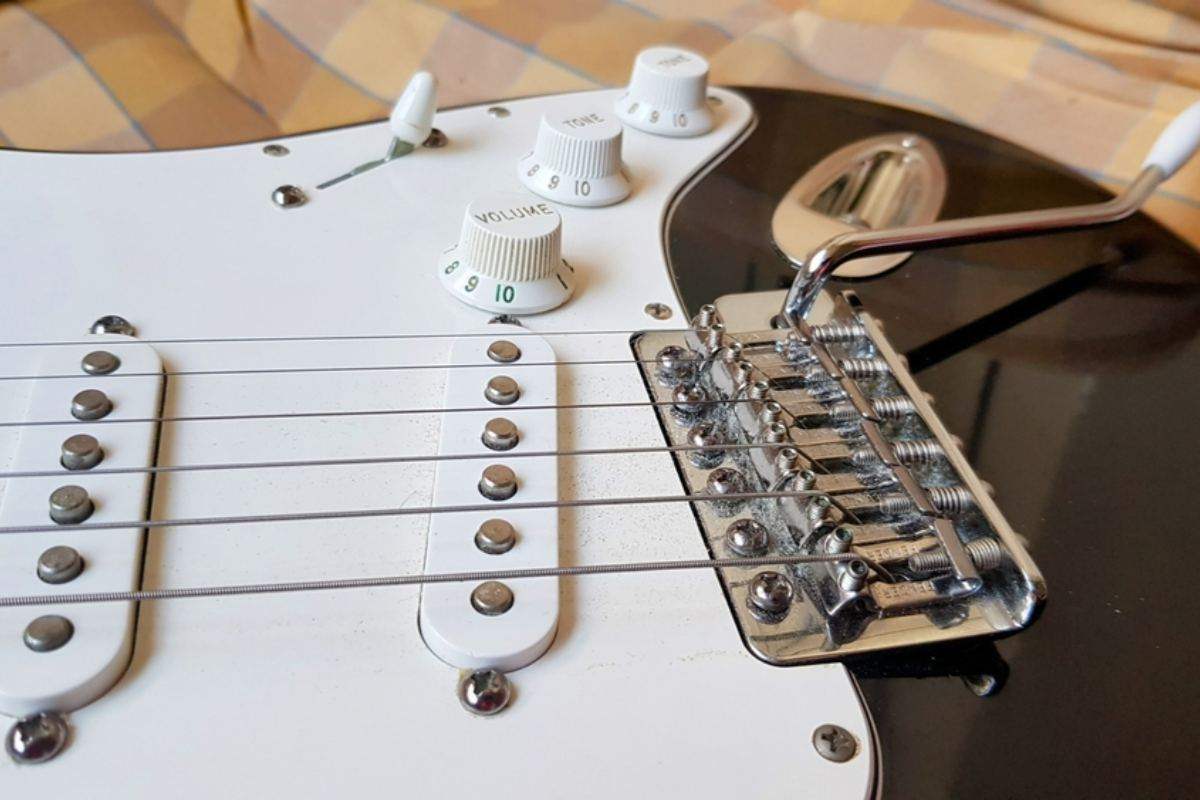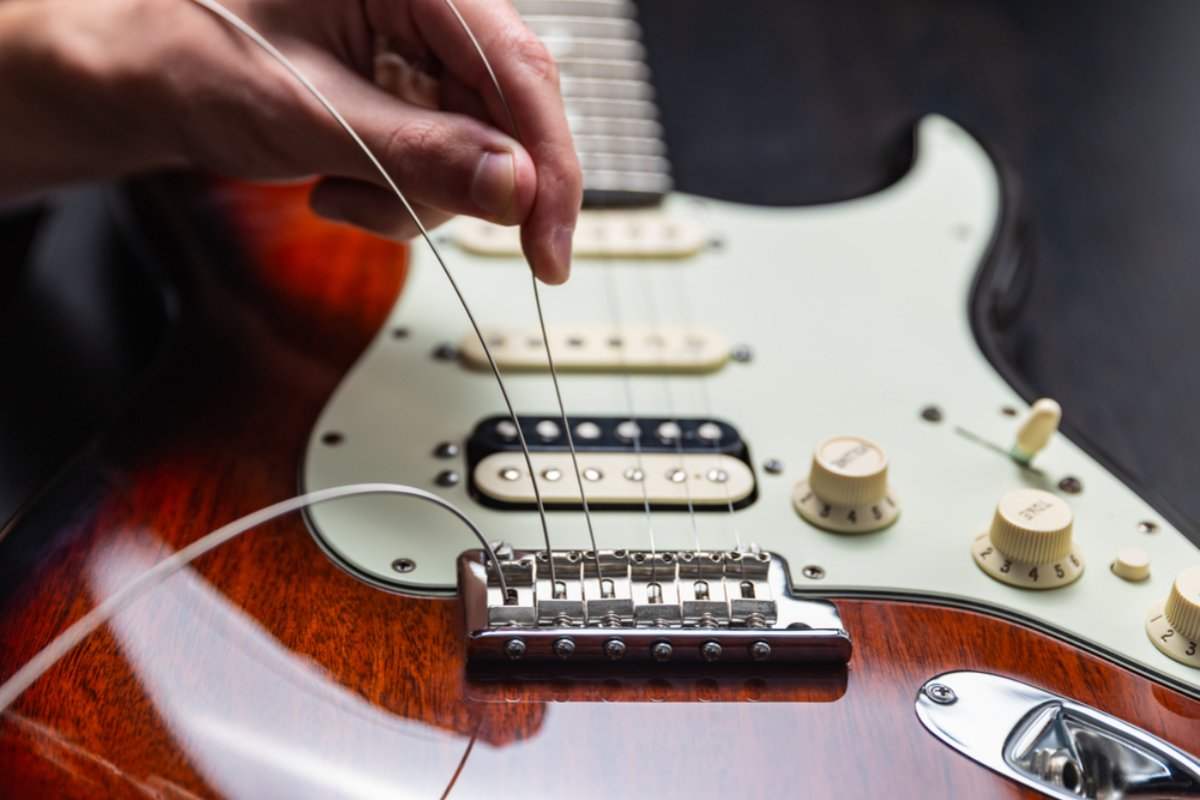Have you ever wondered why some guitarists have lots of the same type of guitar? It could be that they simply love them and they need a spare for when they are playing live, or maybe each one has subtle tonal differences and they just have to keep more than one. Or maybe they just have a bad case of G.A.S. (Gear Acquisition Syndrome) and can’t stop buying them?
However, there is another reason why guitarists have, for example, multiple Les Pauls, it’s because they all feature different pickup configurations and therefore produce a similar sound to each other but each one still has its own distinct voice.
A Les Paul with humbuckers sounds quite different to one with P90s. And if they have mini-humbuckers on them, such as on Les Paul Deluxes, a different tone is produced yet again. If a guitar features, for example, a P90 in the neck position and a humbucker at the bridge, then you can get the best of both worlds to some degree. Plus in the middle position, you will get a combination of the two styles of pickups which you might absolutely love for its uniqueness or not.

Why are Pickups and their Configurations so important?
Pickups are one of the main contributing factors to a guitar's tone. They are after all where the vibrations of the strings you are playing are converted into electrical energy which is then sent on its way and amplified.
Different pickups will have different tonal characteristics, some will be brighter, while others have a warmer, bassier sound. Plus, in addition to this, their position in relation to each other will also have an effect on the sound your guitar creates. So, let’s take a very brief look at the history of the main types of pickups to find out what options are available.
Frying Pan
It all started back in 1931/32 when Rickenbacker put the first electronic pickup on the Rickenbacker Electro A-22, commonly known as The Frying Pan due to its shape. This made it, in essence, the first electric guitar, even though it was actually the first electronic lap steel.
Gibson Charlie Christian
Gibson followed suit in 1936 with a pickup that has become known as the Charlie Christian because it was used by the legendary guitarist. It was attached in the neck position to Gibson Archtops such as the ES-175. Modern versions of this classic jazz pickup are made by a number of boutique pickup manufacturers.
Gibson P90
In 1946 Gibson introduced the P90 which replaced the Charlie Christian and was used across its range of guitars.
The P90 is a very balanced pickup, with a warm, smooth sound, but still enough clarity to bring out the subtleties in your playing. This makes them the most versatile pickup choice if you want the best of both worlds - clarity, and power.

Fender Single Coil
The next major development came in 1950 with the release of the Fender Esquire with its single-coil pickup. This would go on to be the standard pickup option for all Fender Guitars such as Telecasters single coil pickup, Stratocasters coil, Jazzmasters coil, and Jaguars (with some variations over the years) up until the present day.
The single-coil design produces bright and twangy-sounding pickups which are great for clean, articulate, dynamic playing. However, they have a lot of hum at higher volumes, can sound a little thin and sharp at times, and are not the best pickup option if you use a lot of distortion.

Gibson Humbucker
After seeing the effect that Fender’s guitars had on Gibson’s sales figures, Gibson developed and released the Humbucker in 1957. Its design solved the biggest problem with Fender’s single coil pickups which was hum at louder volumes. It achieved this by bucking the hum (which gave it its name) by using two coils instead of one in each pickup that were wound in opposite directions.
Their sound is warm and thick, and they are a superb option for playing heavier styles of music. However, they lack the clarity associated with single coils.
Gretch Filter Tron
A similar idea was independently developed by Gretch at around the same time (1957), which gave us the Gretch Filter Tron pickup. The design was different with a much larger magnet and it has a different tonal character (brighter and sharper than Gibson’s humbucker), but the basic concept was very similar.
Every other pickup since then…
Not oversimplifying the subject, but without going into the intricacies of Danelctro’s Lipstick pickups, Rickenbacker's selection of pickup designs, and high-powered modern active pickups, not much has changed since the classic designs listed above. They are all still in production and widely available (apart from the Frying Pan) which goes to show that as far as pickups are concerned, “if it ain’t broke, don’t fix it!”
Now that the different possible pickup options have been covered, let’s have a look at…

Pickup Placement and Configuration
There are five common and a few more unusual pickup configurations commonly found on the majority of guitars.
S - S - S
This configuration consists of a single coil pickup in the neck position, one in the middle position, and one at the bridge of the guitar. Even though this is one of the most common pickup configurations, it is only found on a limited number of guitars, mainly Fender Stratocasters (as well as Squier Strats and copies), a few Music Mans, and some Paul Reed Smith guitars.
Coupled with a 5-way pickup selector switch it gives the player the following tonal options:
- the neck pickup by itself
- the neck and middle pickup together
- the middle pickup by itself
- the middle pickup and bridge pickup together
- the bridge pickup by itself
S - S
This configuration consists of two single coils, one in the neck position and one in the bridge position, and is commonly found on Fender and Squier Telecasters, Jaguars, Jazzmasters, Mustangs, and Duo Sonics.
H - S - S
This consists of a humbucker in the bridge position, a single-coil in the middle position, and another in the bridge position. These usually have the same switching options as a guitar with an S - S - S configuration.
It is found on deluxe or metal versions of some Fender Stratocasters, as well as on some Super Strats made by other manufacturers.
H - H
A pair of humbuckers, one in the neck position, one at the bridge. This usually features a 3-way switch which allows the player to choose between, only the neck pickup, both pickups together, or only the bridge pickup.
This is the configuration usually found on Les Pauls, Gibson 335s, SGs, ESPs, and some Paul Reed Smith guitars.
H - S - H
This consists of a humbucker in the neck position, a single-coil in the middle position, and a humbucker in the bridge position. The switching is usually the same as an S - S - S configuration.
This configuration is usually found on Super Strats such as the Ibanez Jem series, as well as their more affordable guitars. It is also used on some Charvels and a number of Paul Reed Smith guitars.
Single Pick-up Configurations
Some guitars only feature one pickup, such as Fender Esquires, Les Paul Juniors, and SG Juniors. This can be either a single-coil (Esquire), or a humbucker or P90 (Les Paul and SG) and is normally placed in the bridge position. In terms of configuration, these are either termed S - X, or H - X, depending on the pickup type used, with the X meaning no pickup in that position.
A few guitars only feature a single neck pickup such as the Fender Musicmaster and the Danelectro U1, but this configuration, X - S, is rare.
Other Pickup Configurations
The other options on how to configure a guitar’s pickups are much less common than the ones we’ve already covered. They include:
- S - S - H - a single coil in the bridge and the middle positions and a humbucker in the neck position
- H - S - humbucker in the bridge position with a single coil at the neck
- S - H - a single-coil in the bridge position with a humbucker at the neck.
Now let's finish off by discussing the difference in tone if you get creative with your…
Pickup Choice and Position
Let’s start with one of the easiest ways to massively expand the tonal range of your Stratocaster - by installing one or more Stacked Humbuckers. Depending on how it is wired and the sounds you are going for, this will give you the option via a push-pull volume knob of either having the standard strat single coil sound, or when you need a bit of a sonic push, change it into a growling humbucker.
Lots of guitarists, especially those playing in cover bands with limited equipment options take this route to great effect - bright straty tones one second, absolute filth the next, all with the simple push or pull of the volume knob.
Another more subtle option for Strat players is to use pickups that contain different magnets in different positions. I won’t go into all the variations and complexities of different pickup magnets in this article or it will take you days to get through it. However, many guitarists install a single coil with an Alnico III magnet in the neck position and one with an Alnico II magnet in the bridge position. This produces a softer, warmer tone when the neck pickup is selected, and a brighter, more distortion-friendly tone in the bridge position, with the middle selector producing a superb best of both worlds tone.
Or, for something less subtle, swap out one of your pickups for one with a higher output. This can be done on any guitar with more than one pickup and can create interesting tonal changes. However, there may be quite a bit of experimenting needed before you get the tone you are going for.
That’s just three options, when you consider the number of pickups available, the number of possible pickup combinations, and the choices of where you put each pickup, there are an almost limitless number of tonal possibilities. It’s up to you to find the one that suits your guitar and your playing style.
Wrapping it up
I hope you now have some ideas on how to achieve the tone you are looking for by swapping out a pick-up or two. Don’t be afraid to experiment, changing pickups is quite simple for anyone who has a little experience with a soldering iron. So, go for it and see where the sonic journey takes you.
If you like this article, please share it!
Be sure to join our FB Group Guyker Guitar Parts & Accessories Community to share your ideas! You can also have connections with like-minded guitar players, Guyker updates as well as discounts information from our FB Group.





